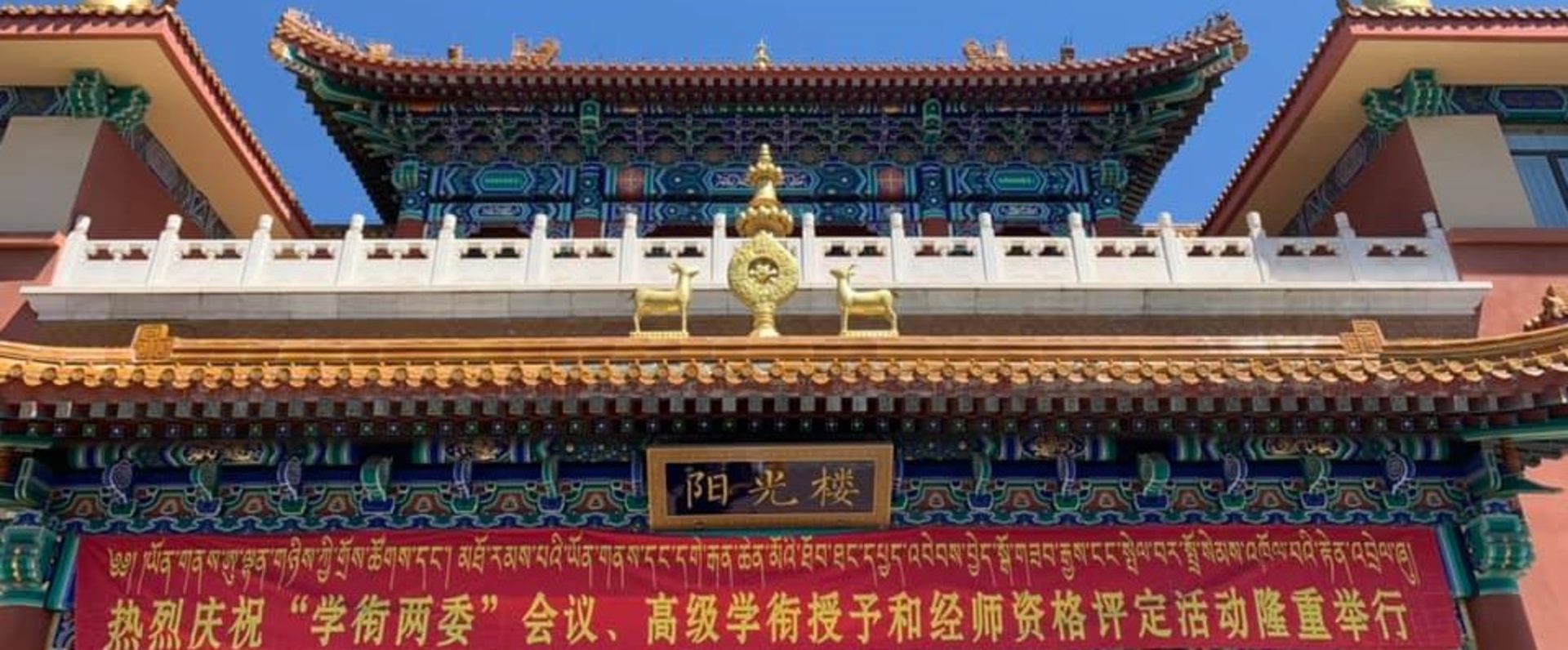
Title in Chinese: 中国藏语系高级佛学院 (zhōngguó zàng yǔ xì gāojí fó xuéyuàn)
Founded: 1987
Headquarters: Xihuang Lama Temple, 11 Huangsi St, Chaoyang, Beijing, China
Website: zyxgjfxy.cn (archive 2020)
The China Advanced Institute of Tibetan Buddhism is a government-run educational institution. It is located in the Qing Dynasty Xihuang Lama Temple (西黄寺; xīhuáng sì) in Beijing, built in 1652 by the Emperor Shunzhi for the fifth Dalai Lama. Its purpose, as stated in its student handbook, is to cultivate and build a reserve of Tibetan Buddhists who are “politically reliable, educated and venerable”.
The Institute was founded in 1987 by President of the Buddhist Association of China (BAC) Zhao Puchu, as an initiative of Chinese Communist Party (CCP) Central Committee and the State Council, with the support of the United Front Work Department and State Administration for Religious Affairs. Its first Dean was the 10th Panchen Lama Choekyi Gyaltsen and is currently overseen by Living Buddha Jamyang.
Applicants for study must be a licensed monk or "tulku" (“reincarnated” lama, referred to by the Chinese authorities as a “Living Buddha”), willing to pledge support for the leadership of the CCP, profess their love of the socialist system, promise to safeguard national unity and oppose separatism. These requirements are verified and approved by the local authorities of the regions from which prospective students apply. In 2004, under Jamyang’s leadership, the Institute established its “advanced title ranking system of Tibetan Buddhism”, and today there are scores of monks who have earned advanced titles, and many graduates hold posts in Tibetan Buddhist monasteries and organisations.
60 percent of class hours are spent on Buddhism, the rest for topics such as China’s legal system, Socialism with Chinese Characteristics, China’s history (which does not include any mention of the exiled Dalai Lama), as well as Mandarin and computer skills. According to Living Buddha Jamyang “We never force the students to be patriotic. It’s a process that aims to influence them unconsciously by having them feel and see by themselves.”
China requires Tibetan Buddhism to be interpreted and practised in such a way as to justify and strengthen its rule in Tibet and to affirm the supremacy of the CCP’s leadership. To this end, the Institute organises frequent seminars on “Tibetan Buddhist Doctrine Interpretation” involving scholars from Han Buddhist monasteries and religious research institutions as well as representatives from Buddhist institutes and monasteries in ethnically Tibetan areas of China. This interpretation ensures that Tibetan Buddhist doctrine is adapted in the direction of full conformity with Chinese socialism.
The Institute also describes itself as “an important window for foreign propaganda of the CCP’s religious policies” and undertakes “a great deal of foreign affairs tasks”, affirming is important and decades-long role in China’s soft power. The Institute has conducted exchanges and overseas visits, and received scores of foreign delegations with the goal of promoting its teaching methods, China’s ethnic and religious policies and “expanding the scope” of United Front work, for which it has played a role in “squeezing the Dalai Lama’s overseas activities”. The Institute’s “Tibetan Buddhism Teaching Work Steering Committee” (藏传佛教学衔工作指导委员会) has carried out much of this work
China invests in Tibetan Buddhist schools to produce next generation of religious leaders, Global Times (2015-05-20)
Tibet’s top religious degree winners ordered to love communist party of China, Tibetan Review (2016-05-25)